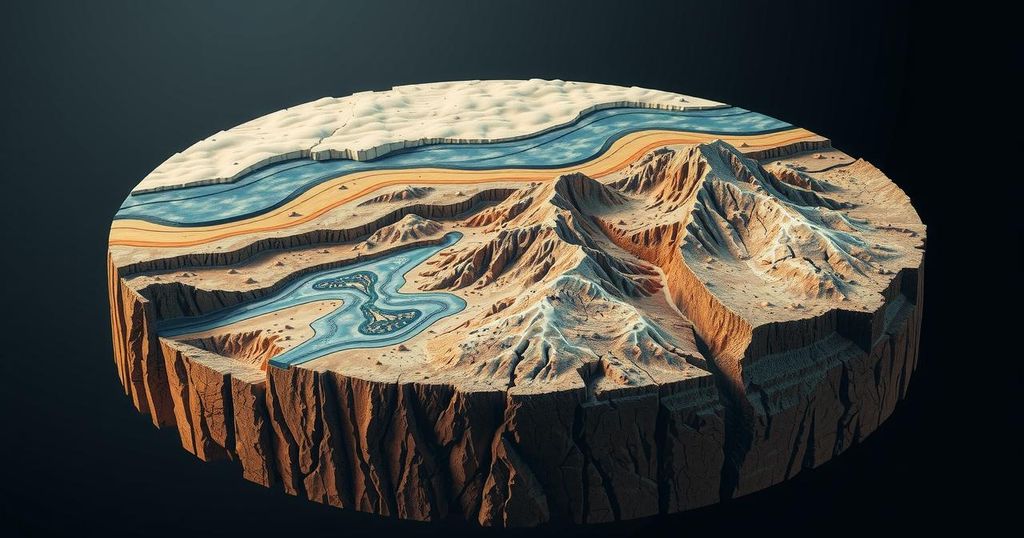Understanding Plate Tectonics: From Continental Drift to Geophysical Insights
Plate tectonics is a comprehensive framework explaining the movement of Earth’s plates, originally proposed as continental drift by Alfred Wegener. Evidence from geological formations, isotopic dating, and paleomagnetism supports this theory. The discovery of ocean ridges, trenches, and transform faults further informs our understanding of tectonic activity and associated phenomena such as earthquakes and volcanism, solidifying plate tectonics as a cornerstone of geoscience.
Plate tectonics represents a foundational theory in geology, detailing the movements and interactions of Earth’s lithosphere through processes such as continental drift, subduction, and the seismic activities associated with plate boundaries. Alfred Wegener first proposed the theory of continental drift, positing that continents were once a singular landmass, which he termed Pangea, and that they have since drifted apart. By analyzing geological formations, paleontological evidence, and the distribution of fossils, Wegener’s groundbreaking hypothesis laid the groundwork for modern understandings of plate tectonics.
Notably, the discovery of striated glacial deposits called tillites across Southern continents and India supports the concept of continental drift. These layers suggest a historical connection among these landmasses, highlighting that they shared climatic conditions consistent with a near-pole position.Similarly, the isotopic dating of Precambrian rocks yielded evidence suggesting that continental fragments were originally part of a singular mass prior to Pangea’s breakup. This alignment of geological features, coupled with paleomagnetic data evidencing pole positions over geological time, fortified the theory.
Although initial opposition was strong, particularly from eminent geologist Sir Harold Jeffreys, who believed in the impossibility of continental drift, advances in geophysical research and paleomagnetism revived interest. By the 1960s, researchers utilized advanced geophysical techniques to demonstrate the motion of tectonic plates with increasing accuracy, culminating in a comprehensive plate tectonics model. The systematic study of the ocean floor revealed intricate patterns of ocean ridges and trenches, influencing our current understanding of the dynamic features of Earth’s surface.
In conclusion, the evolution of plate tectonics represents a pivotal development in geosciences, spotlighting the continuous shifting of continents and the associated geological phenomena, such as earthquakes and volcanism. The integration of diverse geological evidence has provided critical support for Wegener’s initial hypothesis, solidifying its place as a cornerstone of geological science.
Plate tectonics is a fundamental theory in Earth Sciences, elucidating the mechanisms governing the movement of tectonic plates that form the planet’s outer shell. This theory emerged from the earlier concept of continental drift proposed by Alfred Wegener in the early 20th century. Wegener’s hypothesis was initially met with skepticism; however, subsequent geological, paleontological, and geophysical discoveries progressively validated his ideas, highlighting the dynamic nature of Earth’s landscape. Featuring interactions such as subduction, continental collision, and rifting, plate tectonics also provides insight into the occurrences of earthquakes and volcanism, which are critical to understanding geological processes.
In summary, plate tectonics is a vital theory that illustrates the movement of Earth’s lithospheric plates, which are dynamic and influenced by various geological forces. From its controversial beginnings through Alfred Wegener’s continental drift hypothesis to its eventual acceptance as a robust framework within modern geology, this theory has significantly expanded our knowledge of Earth’s physical processes and the interrelation between continents and oceanic structures. With advanced methodologies, the study of tectonic movements continues to evolve, fostering further understanding of our planet’s geology and the phenomena associated with it.
Original Source: www.britannica.com




Post Comment